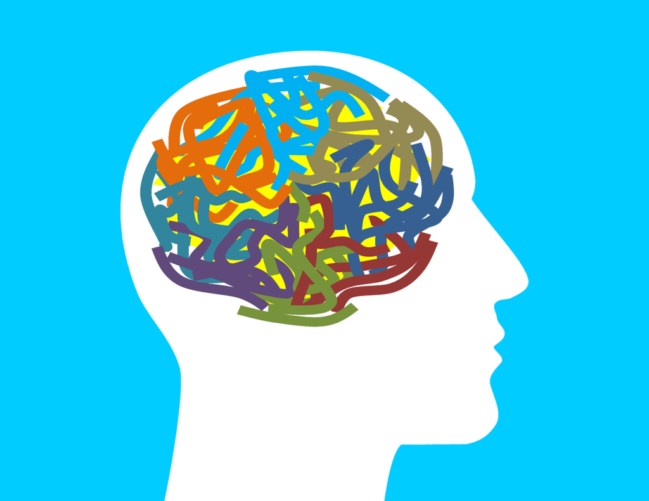Blog
Let's Talk About Personality Disorders
April 3, 2019
5 minutes, 48 seconds

What is a personality disorder?
The Oxford English Dictionary defines it as “a deeply ingrained pattern of behaviour of a specified kind that deviates markedly from the norms of generally accepted behaviour, typically apparent by the time of adolescence, and causing long-term difficulties in personal relationships or in functioning in society”
There are three different categories of personality disorders, including:
- Suspicious-paranoid, schizoid, schizotypal and antisocial
- Emotional and impulsive, borderline, histrionic and narcissistic
- Anxious, avoidant, dependent and obsessive compulsive.
Before a diagnosis is made a clinician will consider what and how many characteristics the patient has.
Let's take a more in-depth look at each personality disorder and possible suggestions on working with this presentation in a therapy room.
- Paranoid personality disorder
People who had this diagnosis will display behaviours of mistrust and will often perceive threats or dangers which others will not recognise or see. They will have little of no close relationships because of the mistrust issues.
If you as a counsellor were to work with this disorder, the alliance would be extremely important. Building up a rapport with the individual to discuss personal issues would be paramount given the characteristics.
- Schizoid personality disorder
When exploring presentation of this disorder, you will see how closely linked each of these personality disorders can be. Within this type of PD, we can see the aspect of relationships being a problem again. However with a twist being that individuals will have a lack of interest in forming relationships as they enjoy freedom, therefore relationships can be seen to tie them down. Displaying emotions can also pose a problem.
When considering working in a counselling capacity with this type of PD, you may want to pay attend to emotions and what benefits relationships can bring to each of our lives. Helping them to identify the resistance and fears they may have when considering allowing someone to get close to them.
- Schizotypal personality disorder
Again, our attention is drawn to the fact that alike the other two personality disorders, relationships are highlighted as an issue and expression of emotions. Thus, diagnosing a specific PD could be somewhat difficult.
Presentation may come across as eccentric to others, therefore forming and keeping friendships may be harder than someone who doesn’t have PD as they are standing out as ‘different’.
Anxiety makes an appearance in this type, especially around other people, and patients may feel like they do not fit in.
When considering working with this type of PD we must bear in mind anxiety and social issues while educating them on why we all have different interests, the benefits of our differences and what we can learn from each other.
- Antisocial personality disorder
When moving into this type of disorder, people will display more dangerous or risky behaviours. They may be more involved with illegal activities, showing little or not worry of the consequences of these behaviours. Due to feeling easily bored, they will find holding down work or getting an education difficult. Others around them might find them hard to be around, and again, due to a selfishness they will hurt others and not show emotions around this.
When thinking about this in a counselling perspective, you might wish to decrease the risky/impulsive behaviours and help them understand the negative impact it is having on their life. I would then move into working on emotions in relation to hurting others by helping them understand the meaning of each emotions and then the impact of these emotions to self and others.
- Borderline personality disorder
This is one of the most well-known personality disorder. What comes with this type of PD is a fear of abandonment and the person will act and behaviour accordingly to prevent people leaving them.
The difference in this type are emotions, the individual will feel emotions intensely. Anger can last days and turn into sadness very quickly. Relationships can be developed but maintaining them is difficult, possibly because of the up and down of their emotions.
Due to the intensity of emotions, they will also experience suicidal thoughts and may carry out acts of self harm.
When considering working with someone experiencing this disorder, emotional regulation may be a consideration. The emotions an individual feels are so extreme and intense that they will struggle. Helping them to self regulate by using coping mechanism and strategies could decrease the intensity that comes when presented with an emotion.
- Histrionic personality disorder
Patient suffering form this personality disorder will present as extrovert to the extreme, behaving in over the top ways to gain others attention. Being influenced by others, to perhaps fit in can be a trait. Gaining relationships is a big aspect and they may behave in ways which seem strange to gain approval.
With this type of disorder, it is particularly important to address their own needs, wants and demands. A lot of this disorder appears to be around others, so perhaps by playing attention to ‘themselves’ more, they might feel more at ease to be themselves around others.
- Narcissistic personality disorder
You will notice characteristics of feeling above others but underneath they will have a low self-esteem. They will also tend to be selfish and ignore others needs.
When working within this type of PD, it's important to look at self-esteem and Maslow's hierarchy of needs, fitting in themselves and others.
- Avoidant personality disorder
Most of the time, avoidance appears in social events, education or work. Self-esteem is also an issue as they will expect criticism and have a continuous feeling of shame or worry and will avoid developing relationships.
When working with someone experiencing this disorder, you might want to address self-esteem first. Building on this might help the patient feeling worthy and therefore, more comfortable that they matter in any given situation.
- Dependent personality disorder
Dependency comes with this type of personality disorder. People feel unsure and avoid decisions in fear of responsibility.
When working with this type of patient, building resilience and self-esteem would be a good start. To do so, you might want to help them build on their coping mechanisms and negative thoughts.
- Obsessive compulsive personality disorder
Within this type, the obsessive type behaviours are employed, keeping order and control and setting unrealistic standards, which will lead to mistakes and fear of making these.
When considering a treatment plan for this type, you might consider the ‘worst cases’ of not carrying out a compulsion or obsession and building on healthy behaviours instead to help the patient restructure their thoughts.
Treatment for this personality disorder has to be a personal choice, the individual has to be willing and ready to work on their disorder. Sometimes, you will get individuals presenting to therapy with a personality disorder, but they will say that it is a diagnosis and they wish to work on something else but using talking therapy will help them address these aspects in a gentle, compassionate and empathetic way.
